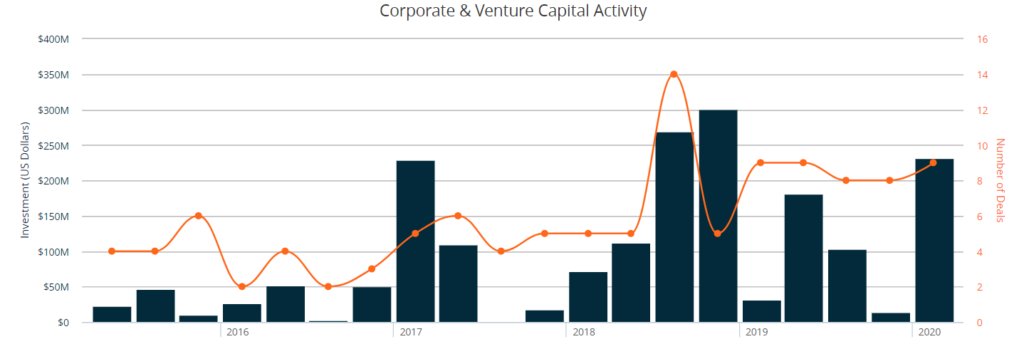EV Charging: What’s Next?
The Covid-19 pandemic has caused a major drop in automotive sales and oil prices, creating uncertainty around the future of electric vehicles. However, BNEF’s recently released Electric Vehicle Outlook estimates a 23% drop in the sales of internal combustion engine (ICE) vehicles, but only an 18% drop for electric vehicles in 2020. Electrification is a long-term strategy for auto OEMs and many fleets, and billions of dollars have already been invested to develop and deploy electric vehicles. Covid-19 will slow growth in 2020, but not disrupt the long-term trend.
Charging is both a key barrier to- and enabler of -electrification. Innovative solutions are needed to enable the adoption of electric vehicles for all stakeholders, including:
- Individual owners: Access to charging stations is key to overcoming range anxiety. This means shared charging stations for commercial buildings and apartment buildings in urban settings, at-home chargers in suburban areas and public DC fast charging in rural areas.
- Fleets: Chargers that meet operational and route requirements, managed charging to prevent high-demand charges and costly infrastructure upgrades for grid connections
- Utilities and grid operators: Intelligent charging to prevent overwhelming the electric grids to match electricity demand with renewable energy production.
The International Energy Agency (IEA) predicts that electric vehicles will require 640 TWh of electricity in 2030, up from 58 in 2018. Without intelligent charging and battery storage, this will overwhelm electric grids that are already burdened with increasing energy demands and volatility from renewables. Innovative technology and business models could turn EVs into a grid resource, creating value for utilities and vehicle owners/operators. A recent report by Guidehouse Insights projected the market for blockchain-based EV charging and grid integration will achieve a 78% CAGR between 2020 and 2029, reaching $1 billion. Combining blockchain with EV charging would enable peer-to-peer energy trading and the ability to sell stored electricity back to the grid, creating a new value stream for EV owners.

- In-Charge Energy, a California-based provider of turnkey electrification infrastructure solutions for medium and heavy-duty fleets, raised a Series A round in March from Macquarie Capital Venture Studio and ABB Technology Ventures.
- Freewire Technologies, a developer of stationary, battery-integrated fast chargers, raised a $25 million Series B round in April from BP Ventures, ABB Technology Ventures and Energy Innovation Capital as well as structured debt through Silicon Valley Bank.
- Inbalance Grid, a provider of intelligent, end-to-end charging solutions for commercial customers founded in April 2019, recently raised a $1 million seed round from Contrarian Ventures, Koinvesticinis Fondas, Mantas Mikuckas and Ernestus Petkevicious.
- Amply, a provider of electric fleet charging as a service, raised a $13 million Series A round in April from Soros Fund Management, Siemens, Congruent Ventures, PeopleFund and Obvious Ventures.
- Wallbox, a Barcelona-based developer of intelligent EV chargers, raised $13 million in mid-May from Endeavor Catalyst, Iberdrola Ventures and Seaya Ventures. The funds will drive international growth and expansion in innovation and R&D.
Innovative Business Models
Some companies, such as Amply and Inbalance Grid, are testing as-a-service business models in different contexts. Amply provides charging-as-a-service for commercial fleets at a price-per-mile-driven fee. The intelligent charging technology optimizes energy use across the fleet to minimize infrastructure upgrades and electricity costs. Inbalance Grid is offering a loan option to provide public charging stations as a service.
Competition
Incumbents are entering new markets and developing innovative form factors and solutions for various charging needs. In March, Siemens unveiled the ‘Electric Avenue’ in the UK, a residential street that has been fully converted to provide lamppost EV chargers. Siemens partnered with ubitricity, a German-based company specializing in lamppost charging points and mobile metering technology. ABB recently completed an acquisition of Chargedot, a Shanghai-based provider of AC and DC charging stations for a range of customers, to expand its presence in China and add solutions developed for local requirements. In January, ChargePoint unveiled the CPF50 Level 2 charging station designed for fleets and multi-family housing.
Keep an eye on…
Government responses to the economic slowdown will be a key factor in determining the near-term prospect for electric vehicles. Luckily, many countries are making electric transportation a priority in recovery plans. China plans to invest nearly $1.5 billion to install 200,000 EV chargers across the country as part of an economic stimulus plan. Electric vehicles are a core piece of France’s $8.8 billion auto industry recovery plan. The EU is considering including incentives for auto makers to produce and sell low-emission vehicles in the green recovery plan.


